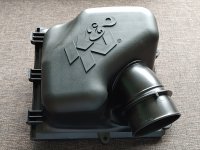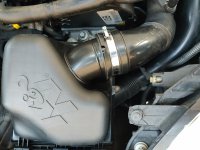Hi there,
I'm driving a bone stock Grande Punto 1.4 t-jet engine and I love the engine.
To get a little bit more out of it I've installed a k&n 57s-3300 kit. This is a kit which comes with a open air filter and a new lid for the oem airbox, so it's a closed system. I like that while I don't get extra noise and I'm still getting cold air but then with an open air intake. All that with an almost oem look
I've also installed this, while in the near future I won't to do a remap
I did some logs with multiecuscan though and the air quantity she's taking is exactly the same as before I've installed the intake kit. Is this because the fact that the (untuned) engine just can't take more air in it, then it does at the moment?
I'm driving a bone stock Grande Punto 1.4 t-jet engine and I love the engine.
To get a little bit more out of it I've installed a k&n 57s-3300 kit. This is a kit which comes with a open air filter and a new lid for the oem airbox, so it's a closed system. I like that while I don't get extra noise and I'm still getting cold air but then with an open air intake. All that with an almost oem look
I've also installed this, while in the near future I won't to do a remap
I did some logs with multiecuscan though and the air quantity she's taking is exactly the same as before I've installed the intake kit. Is this because the fact that the (untuned) engine just can't take more air in it, then it does at the moment?




